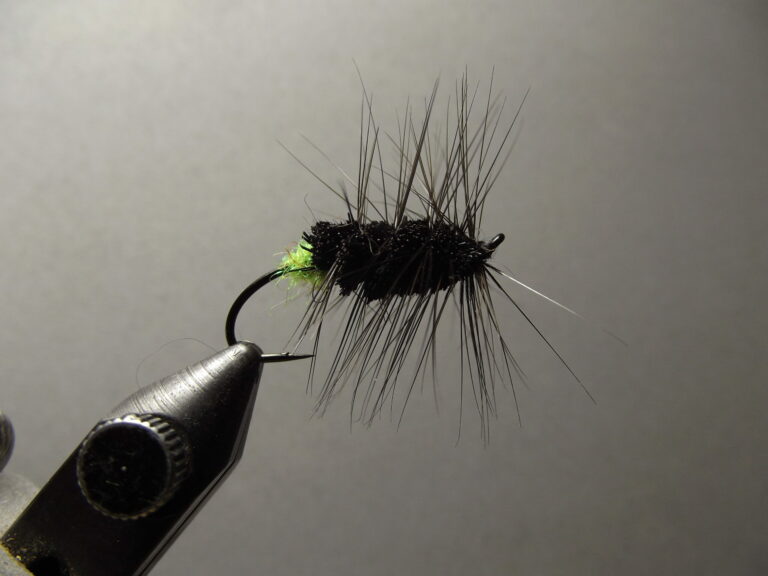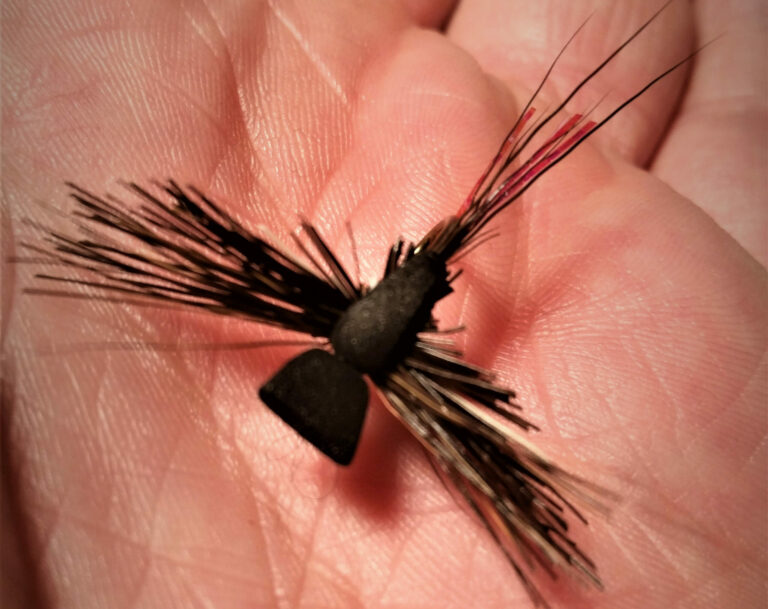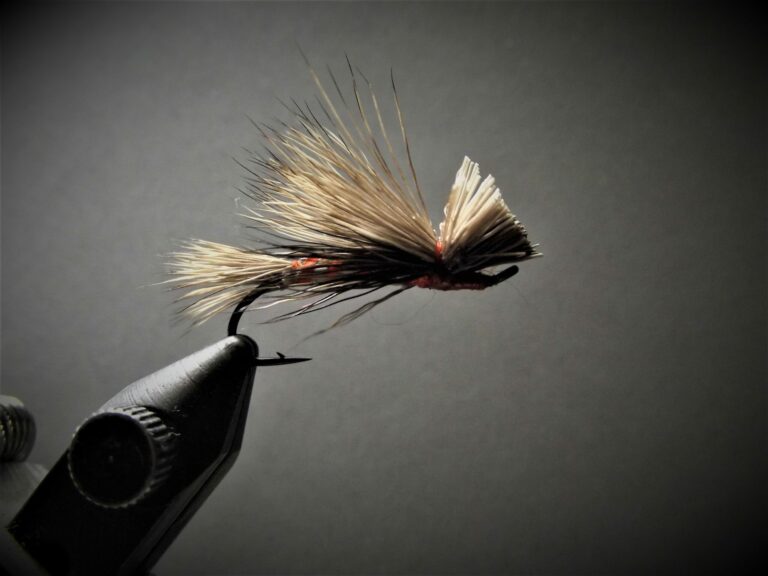Every September since we first met at the Smithers campsite 6 years ago, my good friend Kazumi Ogura and I have had a week-long date to fish Bulkley River steelhead that we hope will rise to the skating dry fly. The hope has become forlorn the past few seasons, but we still meet, we still skate dry flies with Spey rods for steelhead and we still hope to get a pull or two for our week’s effort. And if we don’t, this is fishing life. Our cups remain half-full and we still have next year to dream about, perhaps. Kazumi and I are now both in our mid-seventies; every year we continue wading the Northwest rivers is a blessing; we cherish the remaining time we have together.
Skating a dry fly across a river for big fish is nothing new; Atlantic salmon anglers have been doing it for a century. The passion slowly but surely crept into BC about 50 years ago when dedicated Maritime anglers moved west and brought their sport with them. These days, with dwindling steelhead stocks and two governments who play politics instead of acting to preserve some soon-to-be-extinct populations of steelhead, many anglers are turning to the dry fly for steelhead because it is the epitome of the sport: unsurpassed angling for the world’s finest fish.

Steelhead are not hard to catch on the dry fly. Even though they are not feeding when they enter their home rivers after several years of ocean living and travel, their natal instincts, curiosity and learned habits honed from time spent in their home rivers compel them to eat random food.
What is hard for the angler is catching the timing of the run, having the right water conditions (temperatures, height, clarity), and simply being in the right place at the right time. To be successful, you also must be able to adjust to changing conditions as they present themselves. Low, clear water = smaller flies, and look for fish in unusual places, like far banks in deep slots. High, tinged water = larger flies, fish spread out and behind structures to break higher flows. And it is true, in low light conditions of late summer and fall, dark patterns will out-fish bright ones, because a dark silhouette is more visible to steelhead against the background of the sky, so use black and dark brown for most of your patterns. Harder for us to see, but easier for the fish. As well, don’t forget the riffle hitch, which gives more action to your fly as it skates the surface, and also provides more visibility to the angler.
The best months for success for summer-run steelhead with dry flies in the Northwest is late August through September. Conditions are usually perfect for active fish: water temperatures are usually in the low to mid-teens, clarity is good, and fresh fish are arriving or passing through the runs daily, hopefully pausing to rest for a day or two in the angler’s favourite haunts. The steelhead are in no hurry; they have a few months to reach their spawning grounds, several more to choose a mate and perfect gravel, and then abruptly conclude their appointed tasks of continuing their progeny. The strongest will return to the ocean to spawn again, and sometimes again, but most will not.

Dry flies commonly tied for steelhead success are representations of stoneflies, beetles and fall caddis. Elmer Smith of Prince William, New Brunswick designed and tied the Buck Bug for Atlantic salmon in the 1970’s. He tied it with packed white deer hair and orange palmered hackle; there have been many variations since using most colours under the sun. For steelhead, the Buck Bug in black deer hair with a hot orange or chartreuse butt palmered with black hackle has proven itself by taking many fish.
The Steelhead Beetle first came into prominence in the Northwest; the pattern I use was designed and originally tied by Terrace resident and famous steelhead guru Rob Brown. Rob has progressed to stage 3 of a fisherman’s life, and is committed to using dry flies for steelhead, and most everything else he fishes for. The beetle I tie is tied with some modifications of the Brown original.
The Steelhead Skater I tie is a knock-off from Mike Maxwell’s Telkwa Stone. Mike and wife Denise operated a lodge and guiding business on the Bulkley River near Telkwa for many years until Mike’s death in 2004. I believe the lodge still operates under new management.
Whichever dry fly you choose for chasing steelhead, these three and variations thereof will give you as good a chance as any to rise your fish of a lifetime.

